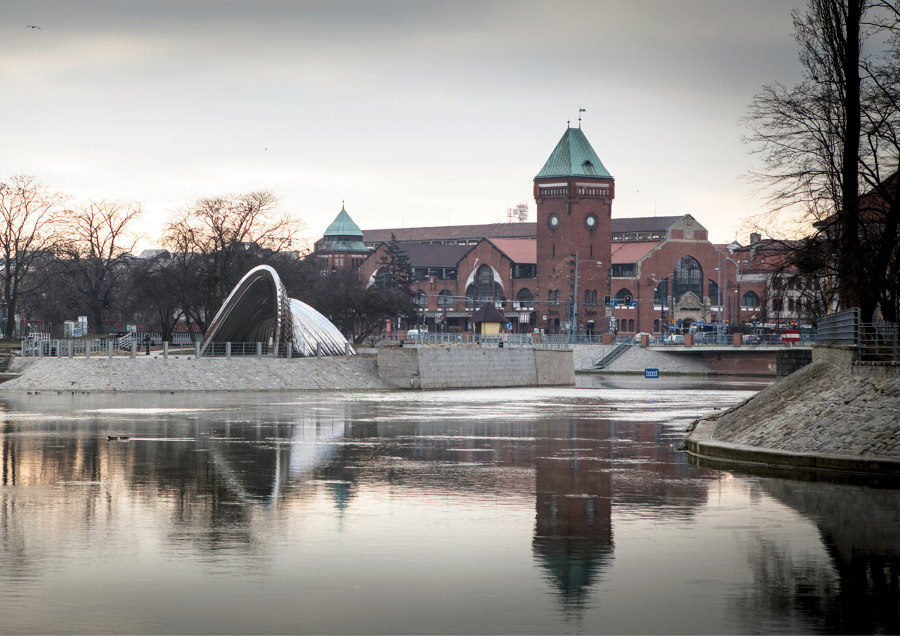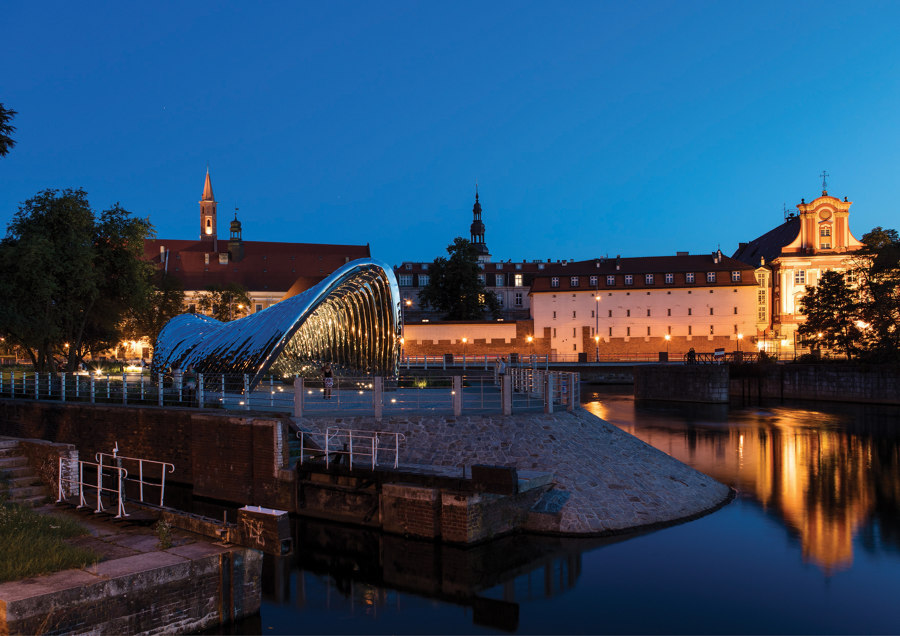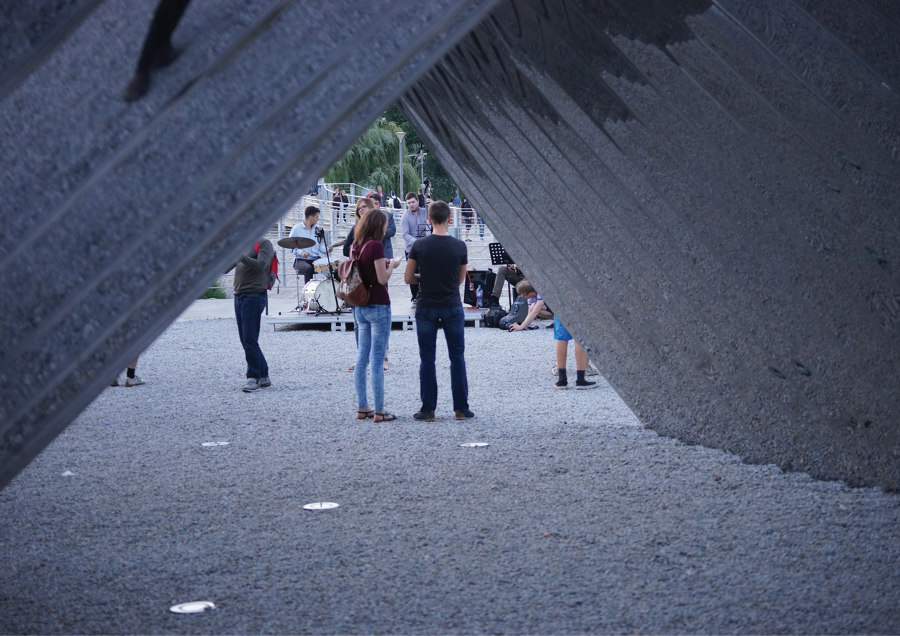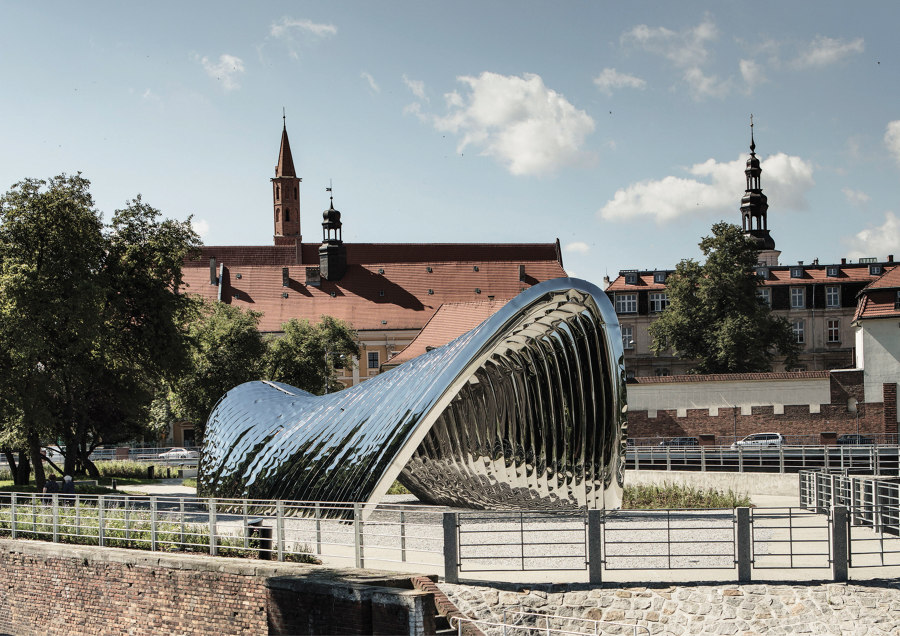
Fotografo: Lukasz Gawronski
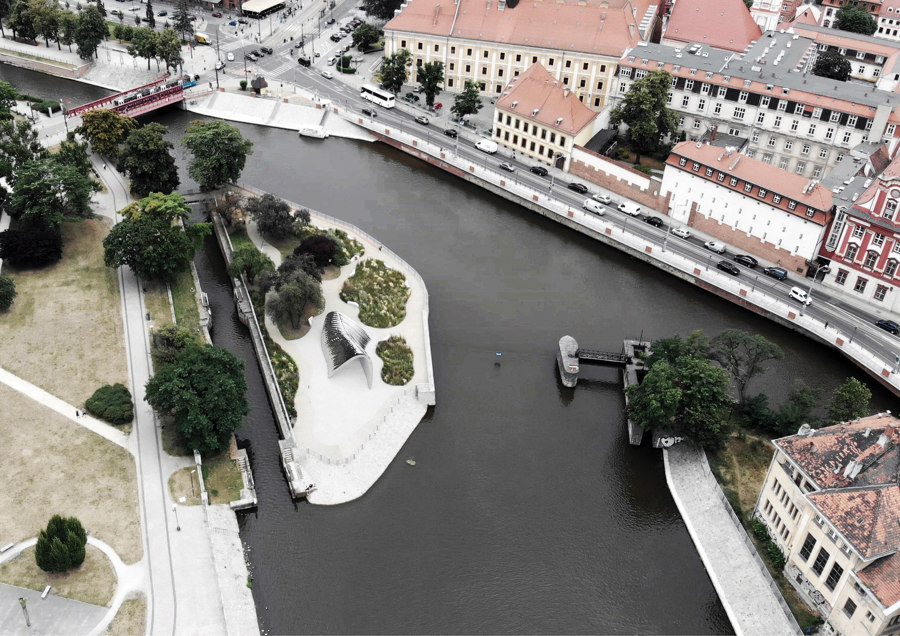
Fotografo: Lukasz Gawronski
This architectural, public sculpture consists of 35 bionic steel arches referring in form to the shape of the island and most of all to construction of nearby historic architecture of Ostrów Tumski originally established in XI century. The arches together create an ultralight, durable construction, its mirror-polished surface reflects the surroundings and gives the effect of a naturally growing sculpture that changes throughout the day and seasons. In December 2019, NAWA has been nominated for the European Union Prize for Contemporary Architecture - Mies van der Rohe Award 2019 - one of the most important and prestigious architectural awards in the world.
NAWA is part of revitalization programme for Daliowa Island – the smallest of over a dozen islands in downtown Wrocław. Aim of the programme was to turn neglected and forgotten space into an area open to meetings, concerts and artistic events, thus a reclamation to city inhabitants.
NAWA is the crowning piece of celebrating European Capital of Culture – Wrocław 2016. The inspiration for use of arc construction was inspired by nearby Cathedral of St. John the Baptist, Market Hall, The Ossolineum and its library. The form of bionic arch goes along with shape of the very island and corresponds with surrounding architecture. Designed shape of the object was divided into individual pieces with original algorithm and in specialist software for parametric design. It allowed to adjust the force arrow and to optimize production, transport and endurance on the basis of real time (FEM Simulation).
The sculpture was made with original FiDU technology (free inner pressure forming) which allows to create tailored, ultralight construction elements in sheet metal. Bionic arches were cut out and welded along the edges and then inflated with compressed air. It allows to change flat 2D objects into durable an delight 3D forms.
The use of stainless steel shaped with innovative FiDU technology makes the project very ecologic. Steel is a sustainable material that can be fully recycled. As the forms are shaped with compressed air, they remain empty inside, that’s why production requires less material and energy comparing to other technologies. Precisely planned production process minimizes the amount of waste that’s is further recycylable. That makes the project fullfill the ideology of circular economy.
Slightly wavy surface of mirror-polished stainless steel resembles surface of the water which reflects everything around and changes throughout the day and seasons. NAWA is the first object made with FiDU technology for such an immense scale and also its manifesto. The initially controversial project became a popular spot for meetings, photo shots and artistic events.
Architect
Oskar Zieta
Design Team
Zieta Architects: Magdalena Gąsiorowska, Paulina Ptasińska, Paulina Burzyńska, Magdalena Szwajcowska, Grzegorz Łochnicki, Piotr Gniewek, Teresa Dąbrowska
Project Partners
Collaborator (external): Mateusz Zwierzycki, ISBA Architekci
Landscape architect: A+F Angelika Kuśmierczyk
Structural engineering: Nobo Solutions
Others: Jerzy Pietraszek, Jarosław Jesionek, Wojciech Bogunia Zieta Studio: Agata Świderska-Zieta, Maja Zieta, Katarzyna Pilna, Marcin Głowacki, Bartek Jankiewicz, Cezary Goral, Dariusz Piątak, Bartłomiej Czerniak
Property Owner / Client
City of Wrocław
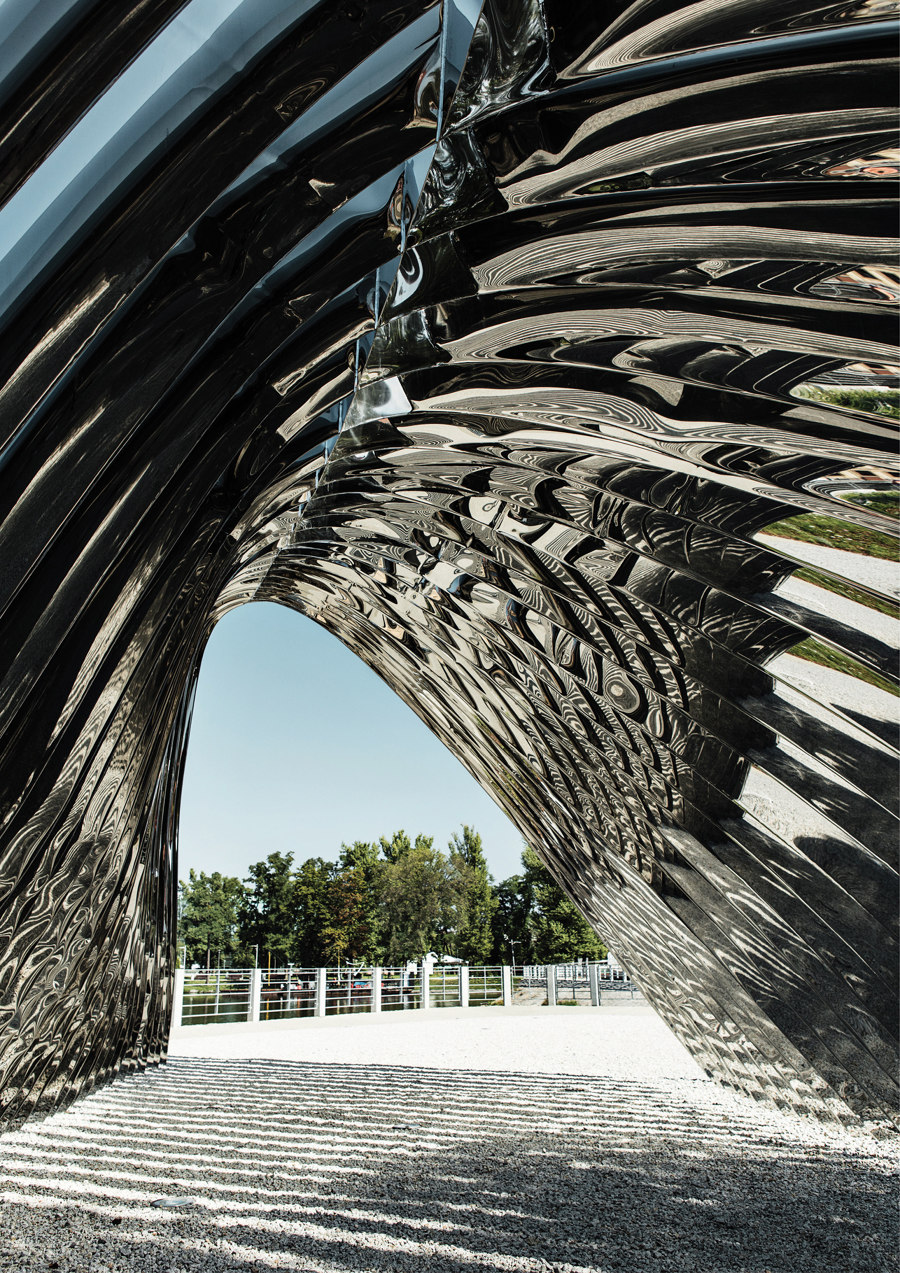
Fotografo: Lukasz Gawronski

Fotografo: Lukasz Gawronski

Fotografo: Lukasz Gawronski
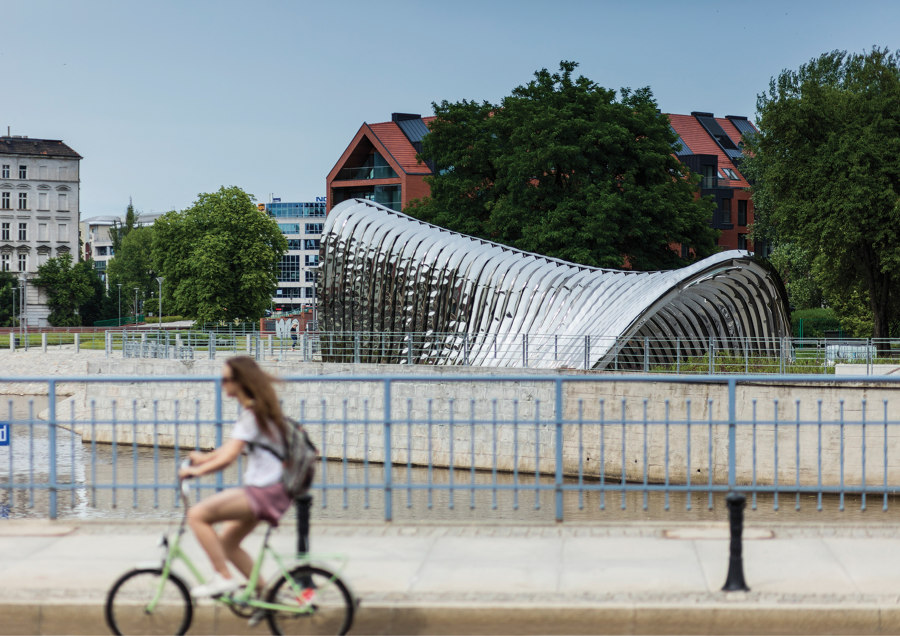
Fotografo: Lukasz Gawronski
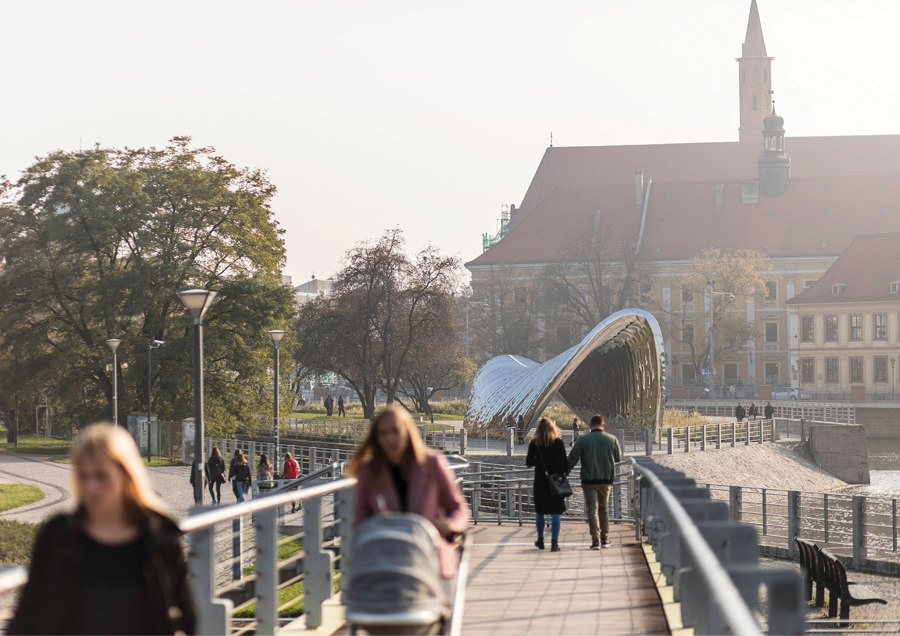
Fotografo: Lukasz Gawronski
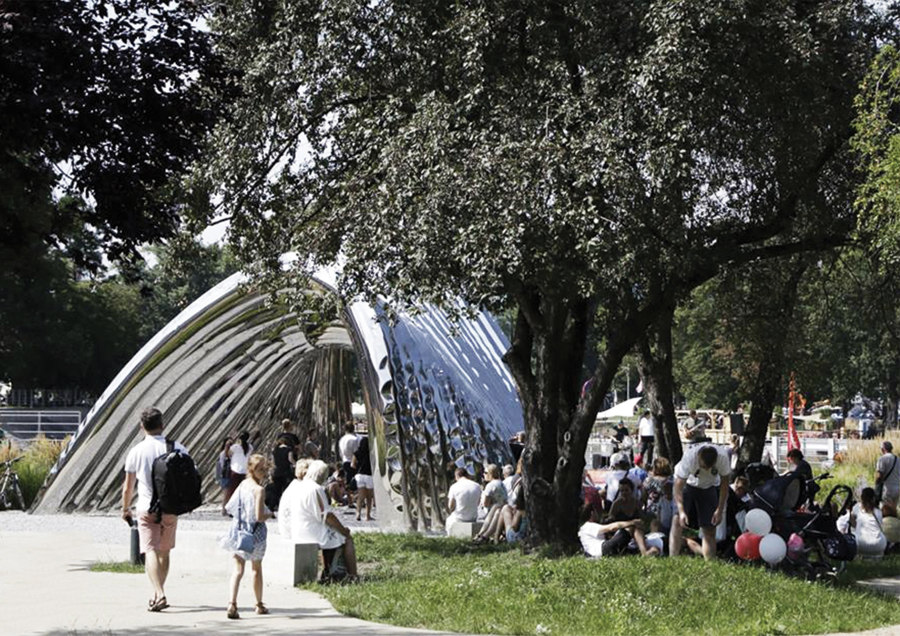
Fotografo: Lukasz Gawronski





